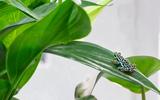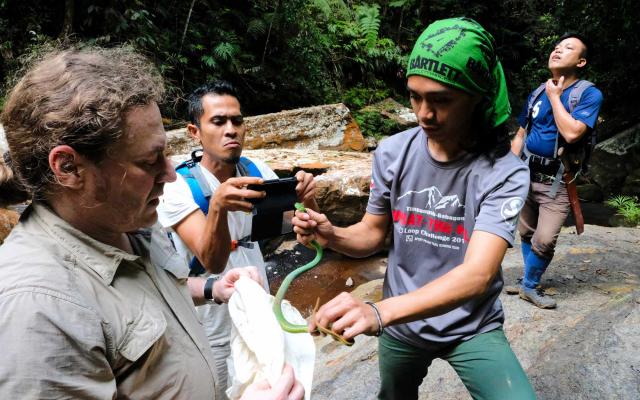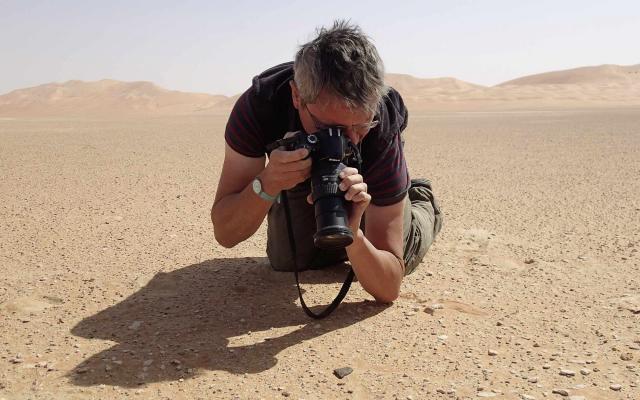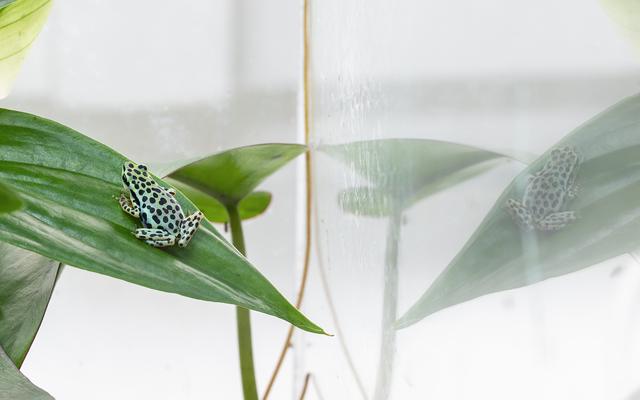All Rio Pescado stubfoot toads (Atelopus balios) have died out. Wait – all of them? No! A small, indomitable population of them in Ecuador managed to resist the invasive chytrid fungus that threatens the species’ existence, and survived almost entirely unnoticed by humans. The challenge now is to rebuild this species, a task that will require the involvement of private individuals, museums and zoos around the world. Since 2018, Ecuador’s Centro Jambatu has been providing animals for conservation breeding for what is known as the “Citizen Conservation Project”. Before embarking on their sometimes long journey to the breeders, the toads undergo a veterinary examination to ensure that they are not carrying any pathogens.
Strict monitoring
As part of this project, 12 captive-bred toads from Basel Zoo finally arrived at the Natural History Museum of Bern in April 2024, where they are currently housed in a part of the museum that visitors can view but not access. They are monitored by Head of the Vertebrates Department and Curator of Herpetology Dr. Stefan Hertwig – an expert on amphibians and reptiles. The NMBE toads are still quite small, and a magnifying lens is required to photograph them. Once fully grown, the toads, with their characteristic spots on their shimmering greenish-yellow skin, reach a size of 3.7 cm, with the females growing slightly larger than the males. Since they are adapted to a tropical climate, the temperature and humidity in their terrarium are strictly monitored, including with an automatic sprinkler system. Caring for the toads also requires certain safety precautions, because their skin secretes a powerful toxin. In addition, there is a strict requirement to keep detailed records to ensure that the Ecuadorian authorities and the Citizen Conservation Project are always kept informed of how the population is developing.
Not an exhibit
The aim of the project is to conserve this beautiful species so that one day it can be reintroduced to what remains of its now protected and chytrid-fungus-free habitat. The NMBE keeps the public up to date on any developments in its stubfoot toad terrarium. For the toads’ safety, they will not be moved into the exhibition spaces for the time being. If you are interested in the toads, you can view the terrarium from the gallery on the third floor – and you might even glimpse the creatures themselves if you have a keen eye or a pair of binoculars!




